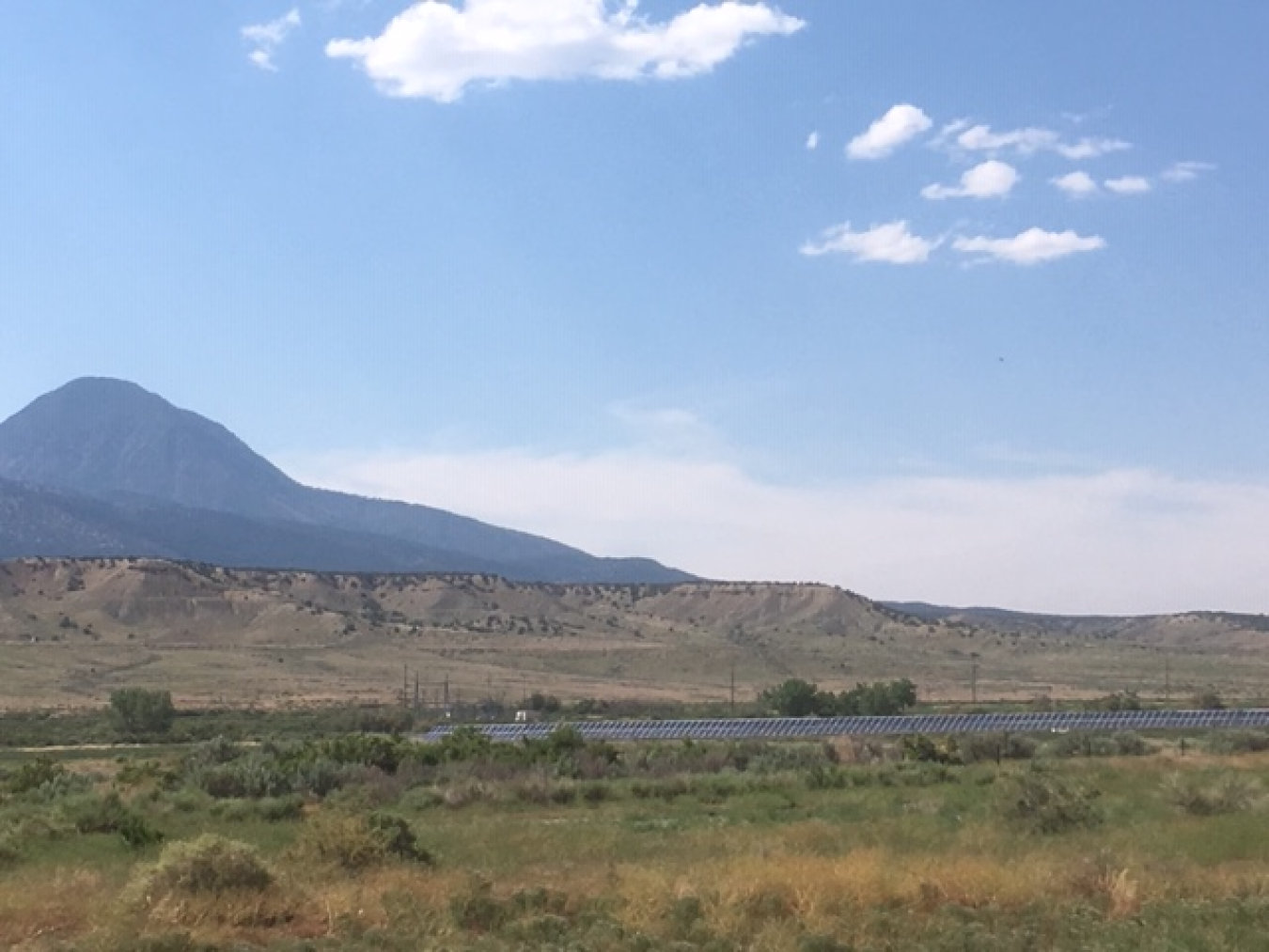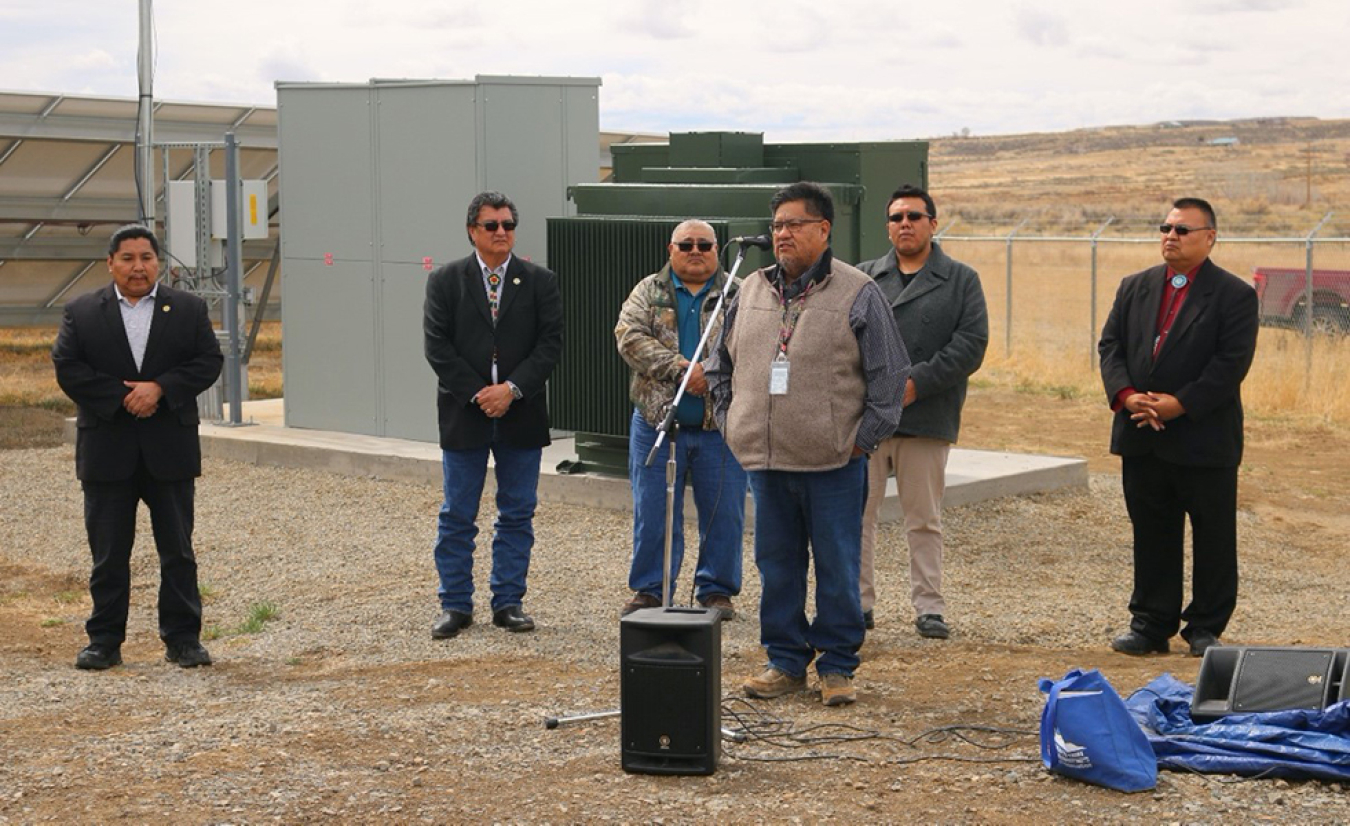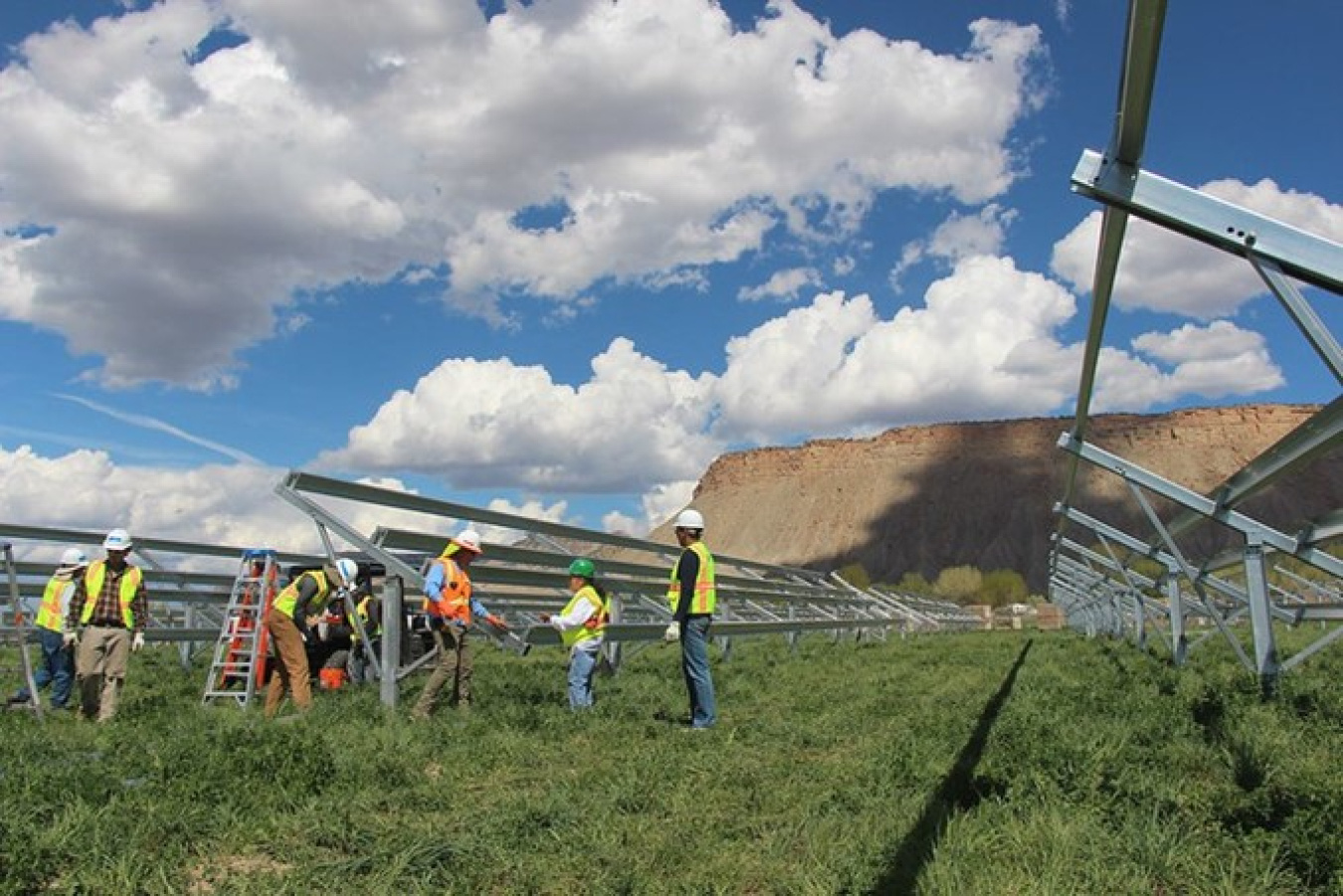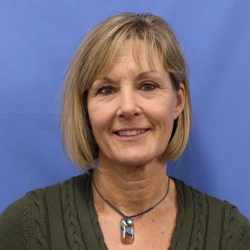DOE awards funding for second solar project after 1-megawatt system goes live.
Office of Indian Energy Policy and Programs
July 20, 2020DOE Awards Funding for Second Solar Project after 1-MW System Goes Live
The Ute Mountain Ute Tribe's (UMUT's) solar farm has been producing homegrown energy for more than three months. Soon 120 tribal energy trailblazers will begin reaping the benefits.

Blazing the trail to solar savings—120 tribal members will soon share in the savings generated by a 1-MW solar farm that has been producing homegrown energy since March. Photo from UMUT
The UMUT first set its sights on solar 7 years ago when it drafted a strategic energy plan with technical assistance from the U.S. Department of Energy (DOE) Office of Indian Energy. That set the Four Corners-area Tribe on a path to transition from a fossil-fuel-based energy economy to one that prioritizes renewable energy.
Through developing, owning, operating, and maintaining solar facilities, the Tribe sought to increase its capacity for self-determination, reduce its reliance on fossil fuels, and ultimately achieve net-zero emissions. The first step was to develop a community solar system.
DOE Grants Pave the Way

What ever happened to that solar project? — Tribal leaders flipped the switch on UMUT’s solar system at a commissioning ceremony on March 12. Photo from UMUT
In 2014, the Tribe completed a DOE-funded feasibility study, which led the Tribal Council to approve the community solar project, apply for DOE funding, and ultimately receive a $973,820 DOE grant in 2017 that leveraged the Tribe's $1.2-million investment in the 1-megawatt solar project. Bringing the project to fruition has been a long road navigated with patience and persistence.
Along they way, there have been more than a few bumps and detours, from their initial DOE funding proposal not being selected, to the complexities of negotiating an interconnection agreement with the utility the local electric co-op purchases its power from, to the challenges associated with supply chain interruptions, inclement weather, and a global pandemic. Through it all, the Tribe has persevered.
One year after breaking ground in a cold drizzle last spring, UMUT held a commissioning ceremony on March 12, just as the COVID-19 pandemic struck.
It's been a decade since UMUT first began exploring options for renewable energy development. And now the Tribe is one step closer to its ultimate goal: achieving net-zero carbon emissions for its 550,000-acre Reservation, which spans three states.
UMUT Poised To Reap the Benefits of Solar
The Towaoc solar project is projected to:
- Offset more than 25% of tribal load with clean solar power, eliminating more than 1,500 tons of greenhouse gas emissions per year
- Pass on cost savings to tribal members through utility bill credits
- Save the tribal government more than $172K in energy costs annually and more than $3.4 million over the life of the system.
Having reached its major milestone on the path to net-zero, the tribal government is now poised to take it a step further. As often happens with tribal energy development, one successful project has become a stepping-stone to another project.
On May 5, DOE announced that UMUT would receive a $245,660 grant to install rooftop solar on seven tribal buildings in White Mesa, Utah. The project is one of nine tribal energy projects DOE selected to receive more than $5 million to supplement the Tribes' investments in their projects, valued at over $10 million.
Like the other selected grant recipients, UMUT will match DOE's investment in this project, which is projected to save the Tribe $22,565 annually and nearly $800,000 over the project's 30-year lifespan. The 144-kilowatt solar system installation in White Mesa is projected to offset more than 95% of the energy needs of that portion of the Reservation.
Tribe To Push Forward with a Proven Partner
GRID Alternatives (GRID), which led the engineering, procurement, and construction of the Towaoc project, will manage the White Mesa project as well. GRID will again engage the tribally owned Weeminuche Construction Authority and will hire four tribal members to help with the installations.

As they break ground, UMUT will be one step closer to fulfilling Planning & Development Director Bernadette Cuthair's vision.
"We want to be good leaders, to say that we are the trailblazers and we’re able to make that path for the people coming behind us. The way you lead has to be in a positive direction. And that’s my hope—that we continue to go in that direction of accomplishment and completing those renewable projects we talked about 10 years ago."
Learn more about the UMUT Solar Initiative, the UMUT White Mesa project, and other tribal energy infrastructure deployment projects selected for funding in May.
Learn more about the current DOE funding opportunity for energy technology deployment on tribal lands, which closes on Aug. 27, 2020.
Learn more about the GRID Alternatives Tribal Program.
More by this author
-
 Communications Strategist with the National Renewable Energy Laboratory’s Communications & Public Affairs Office
Communications Strategist with the National Renewable Energy Laboratory’s Communications & Public Affairs Office

